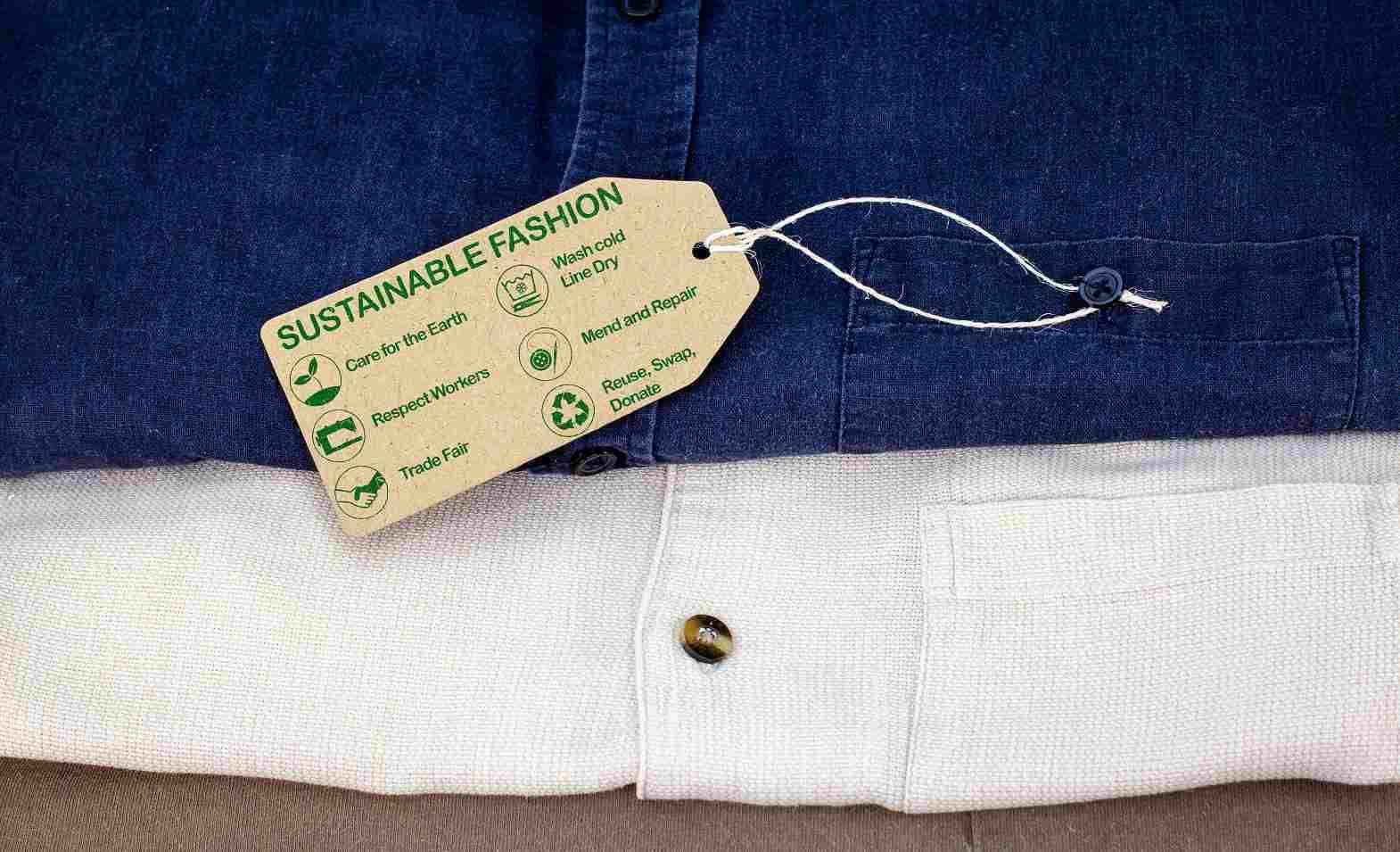The fashion industry is a massive sector that plays an essential role in the global economy, generating billions of dollars in revenue annually. Known for its rapid production cycles and ever-changing trends, the industry has a significant impact on the environment. From the extensive use of water and chemicals in textile production to the carbon footprint left by global shipping and manufacturing, the challenges of achieving sustainability in fashion are immense.
Sustainable fashion seeks to minimise the negative impact of the fashion industry while promoting economic, social, and environmental sustainability. Consumers have the power to drive change. By making informed choices and adopting sustainable practices, they can influence the industry towards more eco-friendly methods.
This article explores the key challenges of sustainable fashion and provides practical ways for consumers to make a positive difference.
Challenges Brands Face
Fashion brands stand at the threshold of a significant opportunity but grapple with complexity, particularly across extensive supply chains. They eagerly await stronger signals from consumers indicating a heightened interest in sustainability. Conversely, consumers are eager but often struggle to articulate their desires clearly. While sustainability matters to them, there is a lack of consensus on definitions or standards to guide their expectations.
However, there is a shifting tide. Younger generations, in particular, exhibit robust concerns about sustainability, a sentiment that is gaining traction across demographics. Brands that take proactive steps to lead and implement sustainable practices can not only gain a competitive edge but also capture a substantial portion of an expanding market.
Durability and quality are resonating strongly with consumers of all ages and income brackets, surpassing the appeal of intangible features. These attributes are highly valued by consumers and do not require any less effort on their part.
Brands can leverage these aspects of sustainable fashion to attract shoppers who prioritise value, provided they can achieve durability without compromising social or environmental considerations. By framing durability as a core element of sustainable fashion, brands create a win-win scenario for consumers: they can engage in sustainable practices without sacrificing key purchasing criteria.
Challenges Consumers Face
The road to sustainable fashion is filled with hurdles that demand our attention. From the harmful chemicals used in making clothes to the vast amounts of waste produced, the fashion industry faces tough environmental challenges. Ensuring fair treatment of workers and wisely managing resources are also critical concerns. Overcoming these obstacles requires a collective effort to rethink how we produce and consume fashion, paving the way for a greener and more responsible industry.
Challenges Sustainable Fashion Faces
The main challenges faced by sustainable fashion are:
1. Environmental Impact
The fashion industry is one of the largest polluters in the world. It contributes to water pollution through the use of toxic dyes and chemicals and consumes vast amounts of water—approximately 10,000 litres1 are needed to produce just one kilogram of cotton. This means it takes approximately 2,700 litres to produce one cotton T-shirt. Additionally, the industry generates significant carbon emissions, largely due to the energy-intensive processes involved in textile production and the transportation of goods across the globe.
2. Waste Generation
Fast fashion, characterised by the rapid production of inexpensive clothing, leads to a high turnover of fashion items. This results in massive amounts of textile waste, with millions of tonnes of clothing ending up in landfills each year. Globally, 57 per cent of discarded clothing2 goes to landfills, and 25 per cent of clothing is incinerated. Many of these garments are made from synthetic fibres that do not biodegrade, contributing to long-term environmental damage.
3. Ethical Issues
The quest for cheap fashion often comes at the cost of labour rights. Many garments are produced in developing countries where workers are paid low wages and work in poor conditions. In 2023, Good On You reported that 93 per cent of brands surveyed by Fashion Checker do not pay their garment workers a living wage.3 This exploitation raises serious ethical concerns and highlights the need for fair trade practices in the industry.
4. Resource Depletion
The fashion industry’s heavy reliance on petroleum-based synthetic fibres and intensive water and land use for natural fibres like cotton depletes finite resources at an alarming rate. Embracing sustainable materials and production methods can mitigate these impacts, preserving resources for future generations while reducing the industry’s overall environmental footprint.
How Can Consumers Make a Difference?
Consumers play a crucial role in promoting sustainable fashion. By adopting mindful shopping habits and supporting ethical brands, they can drive the industry towards more sustainable practices. Here are some actionable steps consumers can take:
1. Educate Yourself
Knowledge is power. According to Bain & Company, approximately 65 per cent of fashion consumers are concerned about the environment, but only a portion consistently prioritise sustainability in their shopping habits.4 Understanding the impact of your clothing choices is the first step towards making more sustainable decisions. Research brands and their practices, look for certifications like Fair Trade and Global Organic Textile Standard (GOTS), and stay informed about sustainable fashion trends and innovations.
2. Buy Less, Choose Wisely
The concept of ‘less is more’ is central to sustainable fashion. Instead of frequently purchasing new items, focus on building a versatile, high-quality wardrobe with pieces that can be mixed and matched. Invest in timeless styles that transcend seasonal trends and prioritise quality over quantity.
3. Support Ethical Brands
Support brands that prioritise sustainability and ethical practices. Many companies are now adopting eco-friendly materials, transparent supply chains, and fair labour practices. By choosing to buy from these brands, you encourage more companies to follow suit.
4. Embrace Secondhand Shopping
Secondhand shopping is a great way to reduce waste and extend the life of clothing. Thrift stores, consignment shops, and online platforms like Depop and Poshmark offer a wide range of pre-loved items. This not only helps the environment but also allows you to find unique and often high-quality pieces at a fraction of the original cost.
5. Repair and Upcycle
Instead of discarding damaged or outdated clothing, consider repairing or upcycling them. Simple sewing skills can extend the life of your garments, and creative upcycling projects can transform old clothes into new, fashionable items. This practice not only reduces waste but also allows you to express your creativity. Items of higher quality and durability offer increased opportunities for resale and reuse, benefiting both brands and consumers alike. Engaging in resale activities can enhance a company’s profit margins per product, diversify revenue streams, and expand its customer base significantly.
6. Rent or Borrow
For special occasions, consider renting outfits instead of buying new ones. Several companies offer clothing rental services for formal wear, everyday outfits, and even maternity clothes. Borrowing from friends or family is another cost-effective and sustainable option.
7. Wash Responsibly
How you care for your clothes not only affects their lifespan but also plays a crucial role in environmental conservation. Washing clothes only when necessary and using cold water can significantly reduce energy consumption and water usage. Opting for eco-friendly detergents further minimises the environmental impact of laundry practices. Air-drying your clothes instead of using a dryer not only saves energy but also helps maintain the fabric’s integrity over time, ensuring they last longer.
8. Recycle and Donate
When deciding to part with clothing items, choosing to recycle or donate them instead of discarding them can make a substantial difference. Donating to reputable organisations ensures that your clothes find new homes and continue to be useful. Additionally, supporting textile recycling programmes helps to close the loop on fashion waste by repurposing old fabrics into new materials, thus reducing the demand for virgin resources and minimising environmental harm.
9. Advocate for Change
Using your voice to advocate for sustainable practices within the fashion industry is crucial for driving meaningful change. By supporting legislation that prioritises environmental protection and labour rights, you can contribute to shaping a more sustainable future. Engaging with brands on social media to inquire about their sustainability efforts and transparency practices encourages accountability and fosters a culture of ethical responsibility within the industry.
The Role of Technology and Innovation
Technological advancements and innovation are key drivers of sustainability in fashion. From the development of eco-friendly materials to the implementation of blockchain for supply chain transparency, technology offers numerous solutions to the industry’s challenges.
1. Sustainable Materials
Researchers are at the forefront of creating new materials that not only meet fashion standards but also uphold environmental sustainability. Innovations such as fabrics made from recycled plastics, biodegradable textiles derived from natural sources, and lab-grown leather offer alternatives to conventional materials, reducing reliance on resource-intensive production methods and minimising environmental impact.
2. Circular Fashion
Circular fashion represents a paradigm shift towards designing garments with their entire lifecycle in mind. By creating products that can be easily recycled, upcycled, or composted, fashion brands contribute to reducing waste and promoting a circular economy. This holistic approach ensures that materials and resources are continuously reused, thereby mitigating the environmental footprint of the fashion industry.
3. Digital Fashion
Digital fashion introduces an innovative solution to the environmental challenges associated with physical garment production. By creating virtual collections for online platforms and virtual events, brands can showcase their creativity without the need for physical manufacturing. This not only reduces carbon emissions and waste but also opens up new avenues for creative expression in the digital realm of fashion.
Conclusion
Sustainable fashion is a complex challenge, but consumers have the power to drive meaningful change. By making informed choices, supporting ethical brands, and adopting sustainable practices, individuals can significantly reduce the environmental and social impacts of their clothing. As technology and innovation continue to advance, the possibilities for a more sustainable fashion industry grow.
As we navigate towards a more sustainable future in fashion, the collaboration between consumers, brands, and innovators becomes increasingly crucial. By continuing to educate ourselves, advocate for systemic change, and embrace technological innovations, we pave the way for a fashion industry that respects both people and the planet. Each sustainable choice we make—from supporting ethical brands to recycling and reducing waste—contributes to a collective effort towards a healthier environment and a more equitable society.









Comments